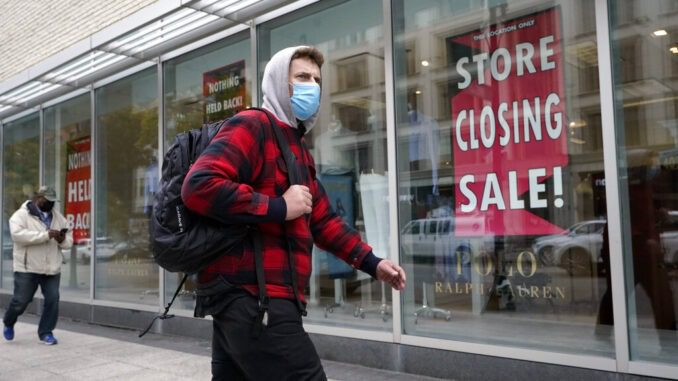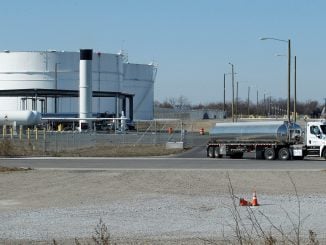
WASHINGTON, D.C. — The U.S. economy grew at a sizzling 33.1% annual rate in the July-September quarter — by far the largest quarterly gain on record — rebounding from an epic plunge in the spring, when the eruption of the coronavirus closed businesses and threw tens of millions out of work.
The Commerce Department’s estimate Thursday of third-quarter growth regained about two-thirds of the output that was lost early this year when the economy essentially froze as safety orders forced restaurants, bars and many retailers to shut down.
The third quarter GDP gain was powered by a record 40.7% increase in consumer spending. Americans began shopping again after the spring shutdown, which had sent consumer spending plunging by a record 31.4%. Consumer spending accounts for roughly two-thirds of economic activity.
Thursday’s estimate of growth is the last major economic report before Election Day, after a campaign that President Donald Trump has sought to build around his economic record before the pandemic hit. Trump has drawn solid public support for his handling of the economy.
Business investment was up a strong 20.3% last quarter, reflecting a 70.1% surge in investment in equipment. Residential investment surged at a 59.3%, reflecting a solid rebound being enjoyed by home builders as demand for homes rises.
Before the big rise in the July-September quarter, GDP had fallen 5% in the first quarter when the country’s record-long expansion of nearly 11 years ended and then dropped a record 31.4% in the second quarter when much of the country shut down.
Though the unemployment rate, at 7.9%, is down significantly from 14.7% at the start of the pandemic recession, it is still historically high. And hiring has slowed for three straight months. The economy is still roughly 10.7 million jobs short of recovering all the 22 million jobs that were lost to the pandemic.
The government’s estimate of the third-quarter jump in the gross domestic product — the total output of goods and services in the United States — was the biggest such increase on records dating to 1947, surpassing a 16.7% surge in 1950 during the Truman administration. In the January-March quarter this year, GDP had contracted at a 5% annual rate before a record-setting 31.4% annual tumble in the spring.
Zandi said he thinks GDP will regain pre-pandemic levels by spring of next year, with GDP expanding 4.2% for 2021. But he warned that the job market might not fully recover until perhaps 2023.
“Many of the jobs in retailing, leisure and airlines have been permanently lost,” he said, “and those folks will have to find different work, and that will take time.”
The government reports the quarterly GDP changes as annual rates. That means the change for any given quarter is calculated as if it had occurred for an entire year. Using another way to view the figures, the GDP peaked in the fourth quarter of 2019 and then fell 10.1% over the next two quarters. Even with the third quarter rebound, the economy remains 3.4% below the peak of output set in the fourth quarter of 2019.



